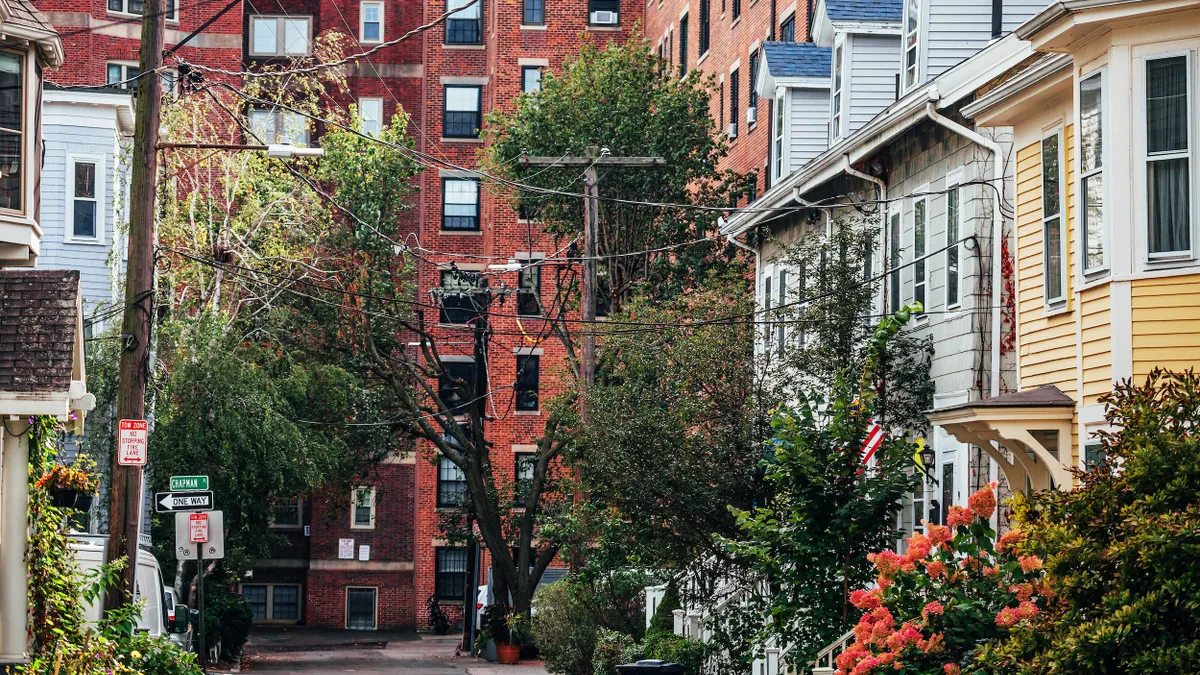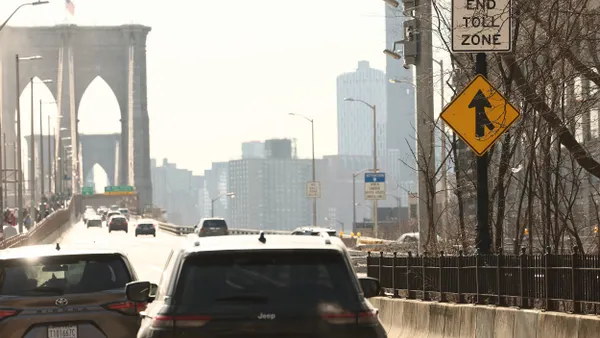Dive Brief:
- To get congestion, road safety and emissions issues under control, cities should consider installing roundabouts at intersections, Carmel, IN Mayor Jim Brainard told Smart Cities Dive last week.
- Since he took office in 1996, the city has installed more than 120 roundabouts, which Brainard said have been key in reducing traffic crashes and improving safety. Compared to national average traffic fatality rate of about 12 per 100,000 people, Carmel’s fatality rate is at two per 100,000. Brainard attributes that rate to the roundabouts having narrower lanes, forcing people to slow down. "It's all about speed," Brainard said on the sidelines of the U.S. Conference of Mayors Winter Meeting in Washington, DC. He said the city now only has about 14 stoplights.
- In addition to the improved safety and reduced congestion, Brainard also cited environmental benefits. He said engineers in Carmel have calculated that the city has saved over 25 million tons of carbon per year, due to a reduction of idling at stoplights and of cars speeding up after being stationary.
Dive Insight:
While localities are slow to introduce roundabouts at their intersections compared to their European counterparts, Brainard said neighboring cities in Indiana have taken his lead and seen similar reductions in traffic fatalities. "The nicest compliment is the cities around us have copied," he said.
Public education was key to getting drivers used to the roundabouts, especially after the first few were installed. Brainard said the city did a lot of outreach through official communications channels, including running informational videos on public access television. "We didn't have a lot of money in those days, so we did it anywhere we could," he said.
Initially, the transition was tough. The city saw a small spike in fender benders when roundabouts were first built as people weren’t as familiar with how to use them. It was crucial to keep up that "constant and repetitive public explanation about why it's important for safety," and in time they made a difference, he said. The Indiana Bureau of Motor Vehicles (BMV) also added a page explaining their use in a driver safety handbook, which contributed to the growing public education.
Brainard emphasized the fiscal benefits of roundabouts. Stoplights and pedestrian crossings at intersections can cost around $300,000 for equipment and installation, and have ongoing costs for maintenance and running electricity to keep the lights working. Even the conversion costs are low, Brainard said, and with developers in the city willing to pay for them when putting together new projects, those costs are getting lower.
As cities look to reduce congestion, many traffic engineers have suggested adding lanes of highway to provide more space for cars, although that strategy has come under fire for creating induced demand. Brainard said roundabouts may be an out-of-the-box way of thinking for some, but they are effective.
"Many times, the engineering answer to congestion is to add lanes, and I'm convinced that all we're doing is building a bigger parking lot to get more people through the green cycle of the light when that light's green," Brainard said. "If you have constant flow through the intersection, we don't need to enlarge those lanes, we don't need to add lanes to the roadway."












